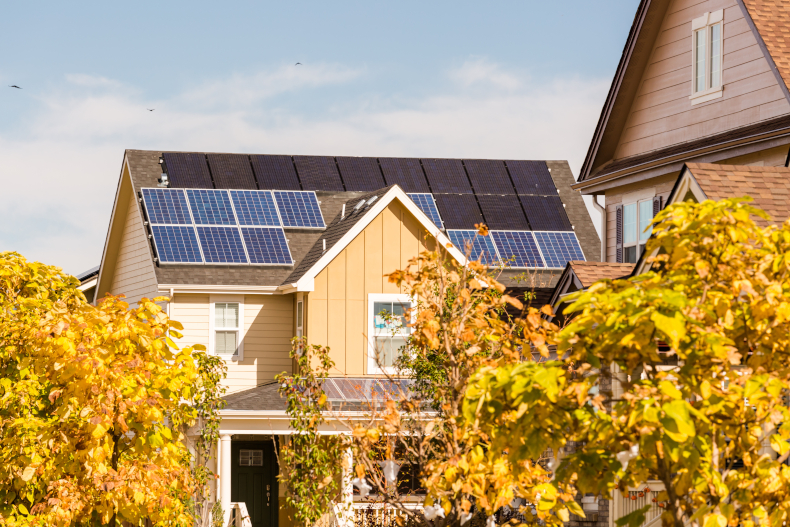
Every day, the earth receives an incredible supply of solar energy. The sun is a fusion reactor that has been burning for over 4 billion years. It provides enough energy in one minute to supply the world's energy needs for one year. In one day, it provides more energy than our current population would consume in 27 years. In fact, the amount of solar radiation striking the earth over a three-day period is equivalent to the energy stored in all fossil energy sources. Solar energy is a free, inexhaustible resource, yet harnessing it is a relatively new idea. The ability to use solar power for heat was the first discovery. A Swiss scientist, Horace de Saussure, built the first thermal solar collector in 1767, which was later used to heat water and cook food. The first commercial patent for a solar water heater went to Clarence Kemp of the US in 1891. This system was bought by two California executives and installed in one-third of the homes in Pasadena by 1897.
Producing electricity from solar energy was the second discovery. In 1839 a French physicist named Edmund Becquerel realized that the sun's energy could produce a "photovoltaic effect" (photo = light, voltaic = electrical potential). In the 1880s, selenium photovoltaic (PV) cells were developed that could convert light into electricity with 1-2% efficiency ("the efficiency of a solar cell is the percentage of available sunlight converted by the photovoltaic cell into electricity"), but how the conversion happened was not understood. Photovoltaic power, therefore remained a curiosity for many years, since it was very inefficient at turning sunlight into electricity. It was not until Albert Einstein proposed an explanation for the "photoelectric effect" in the early 1900s, for which he won a Nobel Prize, that people began to understand the related photovoltaic effect.
Solar energy may have had great potential, but it was left dormant when fossil fuels were more affordable and available. For instance, the US Department of Energy funded the installation and testing of over 3,000 PV systems during the 1973-1974 oil embargo. By the late 1970s, energy companies and government agencies had invested in the PV industry, and "a tremendous acceleration in module development took place." Solar energy improvements were again sought during the Gulf War in the 1990s.
There are several advantages of photovoltaic solar power that make it one of the most promising renewable energy sources in the world. It is non-polluting, has no moving parts that could break down, requires little maintenance and no supervision, and has a life of 20-30 years with low operating costs. Remote areas can easily produce their own supply of electricity by constructing a solar system. Solar power generators are distributed to homes, schools, or businesses, where their assembly requires no extra development or land area and their function is safe and quiet. As communities grow, more solar energy capacity can be added, thereby allowing power generation to keep in step with growing needs without having to overbuild generation capacity as is often the case with conventional large scale power systems. Compare those characteristics to those of coal, oil, gas, or nuclear power, and the choice is easy. Solar energy technologies offer a clean, renewable and domestic energy source.
There has never been a better time to install a solar energy system!
If you want to move into the future and join the solar revolution, or if you want to find out what solar panels are right for you, go to HahaSmart.com and try our price checker tool. You can see how much a system will cost, and how much you can save over the next
20 years.
For more information relating to going solar, don't forget to visit our solar blog section for more handy guides and articles.


Input your address to see if it is solar friendly and how much you can save with solar.
Great. Your address is perfect for solar. Solar incentive is still available. Select monthly utility cost and calculate the size of solar system you will need now.
| kw System size | years Payback period | Lifetime savings |
No money down, 100% finance is available.
|
|
Looking for certified solar installers? Sign up now and we will find them for you. |
Comments